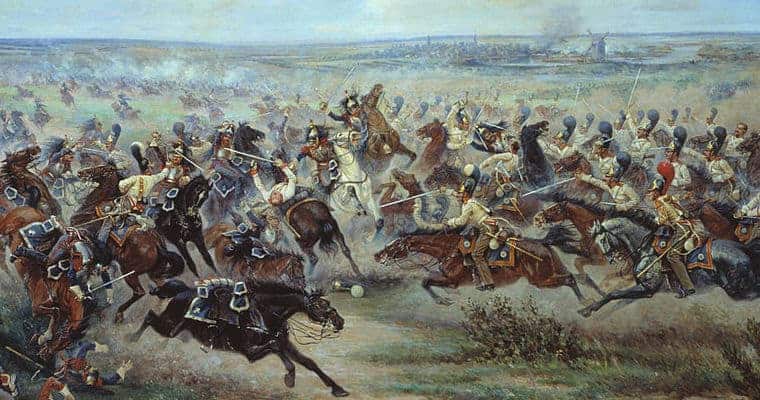The 18th-century was a hard time to be a woman in a lot of ways. Women were cut off from many occupations and expected to be first and foremost wives and mothers. Of course, women did live non-conventional -for the time- lives as writers, inventors, and intellectuals. In fact, some were even soldiers. Usually, women who served in the military did so by pretending to be a man. But with the French Revolution and its focus on radical equality, women found a new place openly fighting with men, albeit in small numbers. And one woman, Marie-Thérèse Figueur, was about to show that women could fight as well as anyone.
Figueur was born near Dijon, France in 1774 and was orphaned by age nine. She was sent to live with her uncle, who was an officer in a French infantry unit. The life of a soldier immediately appealed to the young Figueur. She first displayed her unique courage when her uncle was challenged to a duel by another soldier. On the morning of the duel, Figueur raced after her uncle to defend him and stop the duel. As she wrote in her memoirs, “Following them to an asparagus field which was to be their ‘champ de bataille’, I wanted to seize their brandished sabers in my tiny hands.” The men, struck by the young girl’s courage, agreed to call the fight off.

Like many people, Figueur was swept up in the revolutionary fervor that gripped France in the 1790s following the French Revolution. Her uncle was a staunch monarchist, and when he took up arms in a counter-revolutionary uprising, Figueur went with him. Figueur had her own reasons for hating the French revolutionaries. She believed that her best friend, a Swiss drummer boy named Clément Joseph Melchior Sutter, had been killed during the overthrow of the monarchy. Figueur immediately distinguished herself in action as not only a fearless soldier under fire but as someone completely unconcerned with social convention.
At a time when women were expected to be discrete and well-mannered in public, Figueur was just as quick with a dirty joke as any of the men in her company. Figueur soon earned herself a nickname: Madame Sans-Gêne. It roughly translates as “Mrs. Without Embarassment.” But it was never meant as a condemnation of un-ladylike behavior. Instead, the nickname was an admiring statement on her supreme self-confidence. Figueur wanted to fight, and she didn’t care what anyone thought of her for it.

But in spite of Figueur’s courage, the cause was ultimately doomed. Figueur’s unit was quickly defeated in battle, and Figueur found herself a prisoner of war in Republican hands. Figueur’s sympathies seem to have shifted pretty quickly afterward, or perhaps she just wanted to get back in the field. Either way, the 19-year-old Figueur soon volunteered to join a cavalry unit in the Republican army. Now fighting with her former enemies, Figueur was sent to Toulon. There, she would see her first real action. And for the first- but certainly not the last- time, she would spill blood for France.

